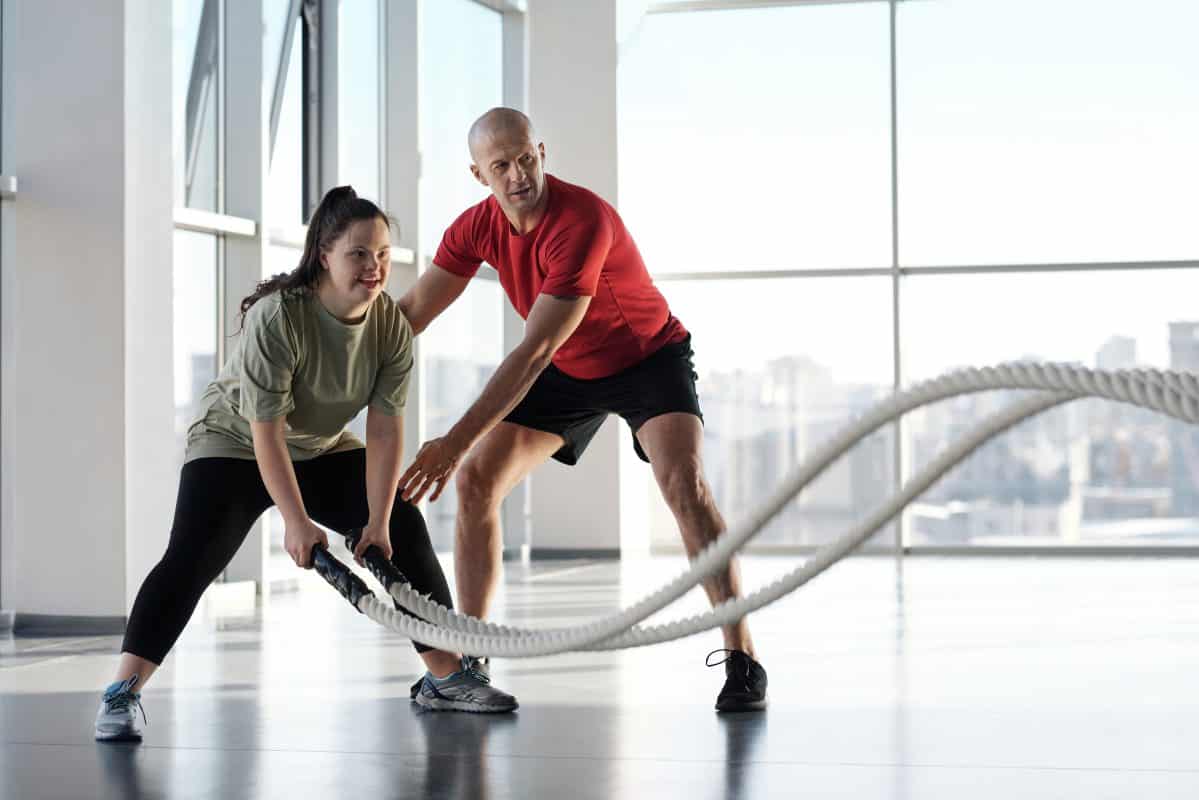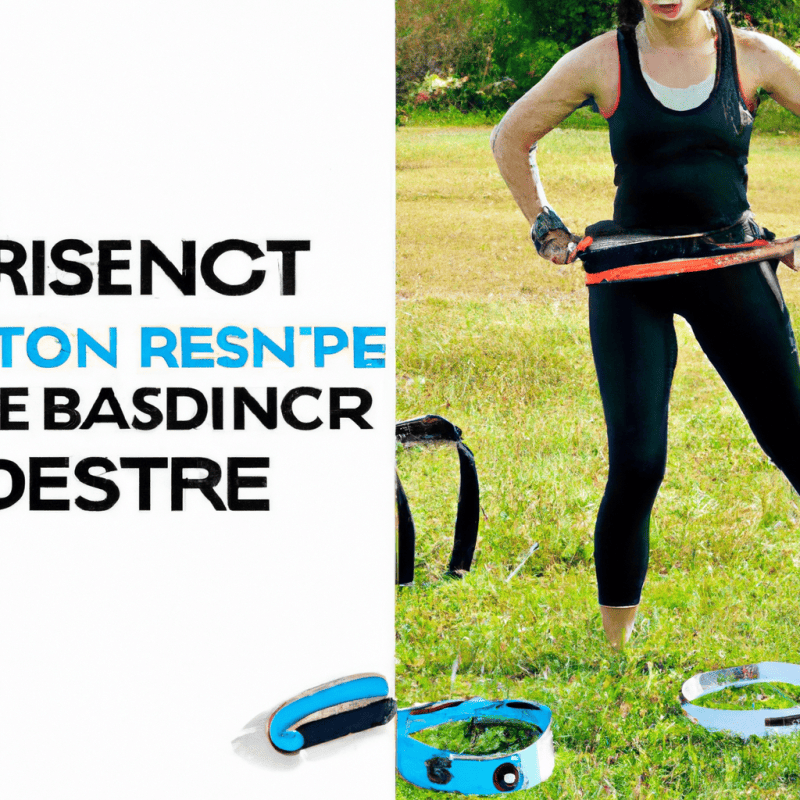resistance bands
Resistance Band Workouts for Beginners
If you’re just starting out on your fitness journey and looking for a simple yet effective way to build strength and tone your muscles, look no further than resistance band workouts. These versatile bands are a fantastic tool for beginners, offering a low-impact and accessible option for exercise. Whether you’re at home or at the gym, resistance bands provide a full-body workout that targets multiple muscle groups, helping you achieve your fitness goals. In this article, we’ll explore the benefits of resistance band workouts for beginners and share some easy exercises to get you started on your path to a stronger, healthier you.
Resistance Band Workouts for Beginners
If you’re new to fitness or looking for a versatile and effective way to incorporate strength training into your routine, resistance band workouts are a fantastic option. Not only are they incredibly convenient and affordable, but they also offer numerous benefits for beginners. In this article, we will explore the advantages of resistance band workouts, guide you in choosing the right resistance band, provide essential safety precautions, demonstrate effective warm-up exercises, and lead you through various upper body, lower body, and full body workouts. We will also highlight the importance of stretching and cool-down exercises to ensure a well-rounded workout routine.

Benefits of Resistance Band Workouts
Resistance band workouts offer a multitude of benefits, making them an excellent choice for beginners. First and foremost, resistance bands are incredibly versatile. They can be used to target different muscle groups and provide varying levels of resistance, allowing you to customize your workouts based on your fitness level and goals. Furthermore, resistance bands are lightweight and portable, making them ideal for travel or home workouts. They are also safe and easy to use, minimizing the risk of injury that may occur with other forms of strength training. Finally, resistance band workouts can enhance muscle strength, improve balance and stability, increase flexibility, and promote overall functional fitness.
Choosing the Right Resistance Band
When it comes to resistance bands, one size does not fit all. It’s important to choose the right resistance band based on your fitness level and the specific exercises you plan to perform. Resistance bands typically come in different colors, each representing a varying level of resistance. As a beginner, it’s recommended to start with a band that offers light resistance and gradually progress to higher resistance levels as you become stronger. It’s also important to consider the length and thickness of the band. Longer bands allow for a wider range of exercises, while thicker bands provide more resistance. Experimenting with different bands will help you find the one that best suits your needs and abilities.
Safety Precautions
Before diving into any workout routine, taking safety precautions is essential. When using resistance bands, be mindful of the following:
- Check for any tears or damage in the bands before each use to ensure they are in good condition.
- Begin with light resistance and gradually increase the intensity as your strength and comfort levels improve.
- Always maintain proper form and technique throughout the exercises to prevent strain or injury.
- Avoid overstretching the bands, as this could lead to them snapping or causing unexpected recoil.
- Be cautious while anchoring the bands, ensuring a secure attachment to a sturdy object to prevent accidents.
- If you experience any pain, discomfort, or unusual sensations during the workout, stop immediately and consult a healthcare professional.
By following these safety precautions, you can enjoy a safe and effective resistance band workout.
Warm-up Exercises
Just like any other workout, warming up before starting your resistance band exercises is crucial. Warming up your muscles and joints helps improve circulation, increase flexibility, and reduce the risk of injury. Here are some simple warm-up exercises to incorporate into your routine:
- Arm Circles: Stand with your feet shoulder-width apart and extend your arms to the sides. Start making small circles with your arms, gradually increasing the size of the circles. Repeat in the opposite direction.
- Leg Swings: Stand next to a wall or any stable surface for support. Swing one leg forward and backward while keeping your upper body stable. Repeat with the other leg.
- Torso Twists: Stand with your feet shoulder-width apart and place your hands on your hips. Slowly rotate your upper body from side to side, keeping your core engaged.
Performing these warm-up exercises for a few minutes will prepare your body for the resistance band workout ahead.

Upper Body Workouts
Resistance band exercises can effectively target and strengthen your upper body muscles, including the biceps, triceps, and shoulders. Here are three beginner-friendly upper body exercises you can incorporate into your routine:
Bicep Curls
- Step on the resistance band with both feet, ensuring it is securely under your arches.
- Hold the handles or grip the band firmly with your palms facing forward, elbows close to your sides.
- Slowly curl your hands toward your shoulders, keeping your elbows stationary.
- Pause for a moment at the top and then release back to the starting position.
- Repeat for 10-15 repetitions.
Bicep curls with resistance bands are a great way to build strength in your arms and sculpt your bicep muscles.
Tricep Extensions
- Hold the resistance band with both hands, palms facing down, and extend your arms overhead.
- Keep your upper arms close to your head and your elbows pointed forward.
- Slowly bend your elbows and lower your hands behind your head, feeling the stretch in your triceps.
- Exhale and straighten your arms, returning to the starting position.
- Repeat for 10-15 repetitions.
Tricep extensions with resistance bands target the back of your arms and help tone and strengthen the triceps muscles.
Shoulder Press
- Stand on the resistance band, shoulder-width apart, with the band securely under your feet.
- Hold the handles or grip the band so that your palms are facing forward, at shoulder level.
- Push the band upward until your arms are fully extended overhead.
- Slowly lower the band back to the starting position.
- Repeat for 10-15 repetitions.
Shoulder presses with resistance bands engage the deltoid muscles and contribute to developing strong and well-rounded shoulders.
Lower Body Workouts
To strengthen your lower body muscles, such as the quadriceps, hamstrings, and glutes, incorporating resistance band exercises into your routine can be highly effective. Here are three beginner-friendly lower body exercises:
Squats
- Stand with your feet shoulder-width apart and place the resistance band above your knees.
- Keeping your chest up and core engaged, slowly lower your body into a squat position by pushing your hips back and bending your knees.
- Pause for a moment when your thighs are parallel to the ground, then push through your heels to return to the starting position.
- Repeat for 10-15 repetitions.
Squats with resistance bands target the entire lower body, promoting muscle growth and improving overall lower body strength.
Lunges
- Stand with one foot stepping on the resistance band, ensuring it is securely under your arch.
- Step your other foot back, creating a lunge position with your front knee bent and your back knee hovering just above the ground.
- Keep your front knee aligned with your ankle and your torso upright.
- Push through your front heel, return to the starting position, and switch legs.
- Repeat for 10-15 repetitions on each leg.
Lunges with resistance bands engage multiple lower body muscles simultaneously, including the quads, hamstrings, and glutes, helping to build lower body stability and strength.
Glute Bridges
- Lie on your back with your knees bent and your feet hip-width apart, positioned on the resistance band.
- Place your arms along your sides, palms facing down.
- Engage your glutes and core as you lift your hips upward, creating a straight line from your knees to your shoulders.
- Hold the position for a few seconds, squeezing your glutes at the top.
- Lower your hips back down to the starting position.
- Repeat for 10-15 repetitions.
Glute bridges with resistance bands are an excellent exercise to target and strengthen the gluteal muscles, helping to improve stability and posture.

Full Body Workouts
Resistance bands can also provide effective full body workouts by targeting multiple muscle groups simultaneously. Here are three full body exercises suitable for beginners:
Standing Rows
- Step on the resistance band, feet shoulder-width apart.
- Cross the band in front of you, gripping one handle in each hand.
- Start with your arms extended in front of you, palms facing each other.
- Pull the bands towards your body, squeezing your shoulder blades together.
- Slowly release back to the starting position.
- Repeat for 10-15 repetitions.
Standing rows with resistance bands engage the back, shoulders, biceps, and core muscles, contributing to a balanced and strong upper body.
Chest Press
- Wrap the resistance band around a sturdy object at chest height.
- Stand facing away from the attachment point and hold the handles with your palms facing forward.
- Start with your arms bent at a 90-degree angle, elbows out to the sides.
- Push the bands forward, extending your arms until they are fully straight.
- Slowly bring your arms back to the starting position.
- Repeat for 10-15 repetitions.
Chest presses with resistance bands target the chest, shoulders, and triceps, helping to build upper body strength and definition.
Deadlifts
- Step on the resistance band with your feet shoulder-width apart and grip the handles with an overhand grip.
- Keep your back straight, core engaged, and knees slightly bent.
- Lower the band by hinging at your hips, allowing your hands and the band to lower towards your shins.
- Keeping your back straight, squeeze your glutes and drive through your heels to return to a standing position.
- Repeat for 10-15 repetitions.
Deadlifts with resistance bands engage multiple muscle groups, including the hamstrings, glutes, lower back, and core, contributing to overall lower body strength and stability.
Stretching and Cool Down Exercises
After completing your resistance band workout, it’s crucial to dedicate some time to stretching and cooling down your muscles. This helps improve flexibility, prevent muscle soreness, and promote recovery. Here are a few simple stretching exercises to incorporate into your post-workout routine:
- Hamstring Stretch: Sit on the ground with one leg extended in front of you and the other leg bent. Gently lean forward, reaching towards your toes, and feel the stretch in the back of your extended leg. Hold for 15-30 seconds and switch legs.
- Quad Stretch: Stand tall, grab your ankle or foot behind you, and gently pull your heel towards your glutes. Maintain a straight posture and feel the stretch in the front of your thigh. Hold for 15-30 seconds and switch legs.
- Shoulder Stretch: Extend one arm across your chest, using your other arm to gently pull it closer to your body. Feel the stretch in your shoulder and hold for 15-30 seconds. Repeat with the other arm.
Remember to breathe deeply during each stretch and avoid any bouncing or jerking movements. Stretching should feel challenging but not painful.
In conclusion, resistance band workouts are an excellent option for beginners seeking a versatile, convenient, and effective way to incorporate strength training into their fitness routine. The benefits of resistance band workouts are extensive, offering muscle strengthening, flexibility improvement, and overall functional fitness enhancement. By choosing the right resistance band, following safety precautions, performing warm-up exercises, and incorporating targeted upper body, lower body, and full body workouts, you can achieve a well-rounded and fulfilling fitness journey. Don’t forget to prioritize stretching and cool-down exercises to promote muscle recovery and prevent injury. So grab your resistance bands, get ready to work those muscles, and enjoy the journey towards a stronger and healthier you!


